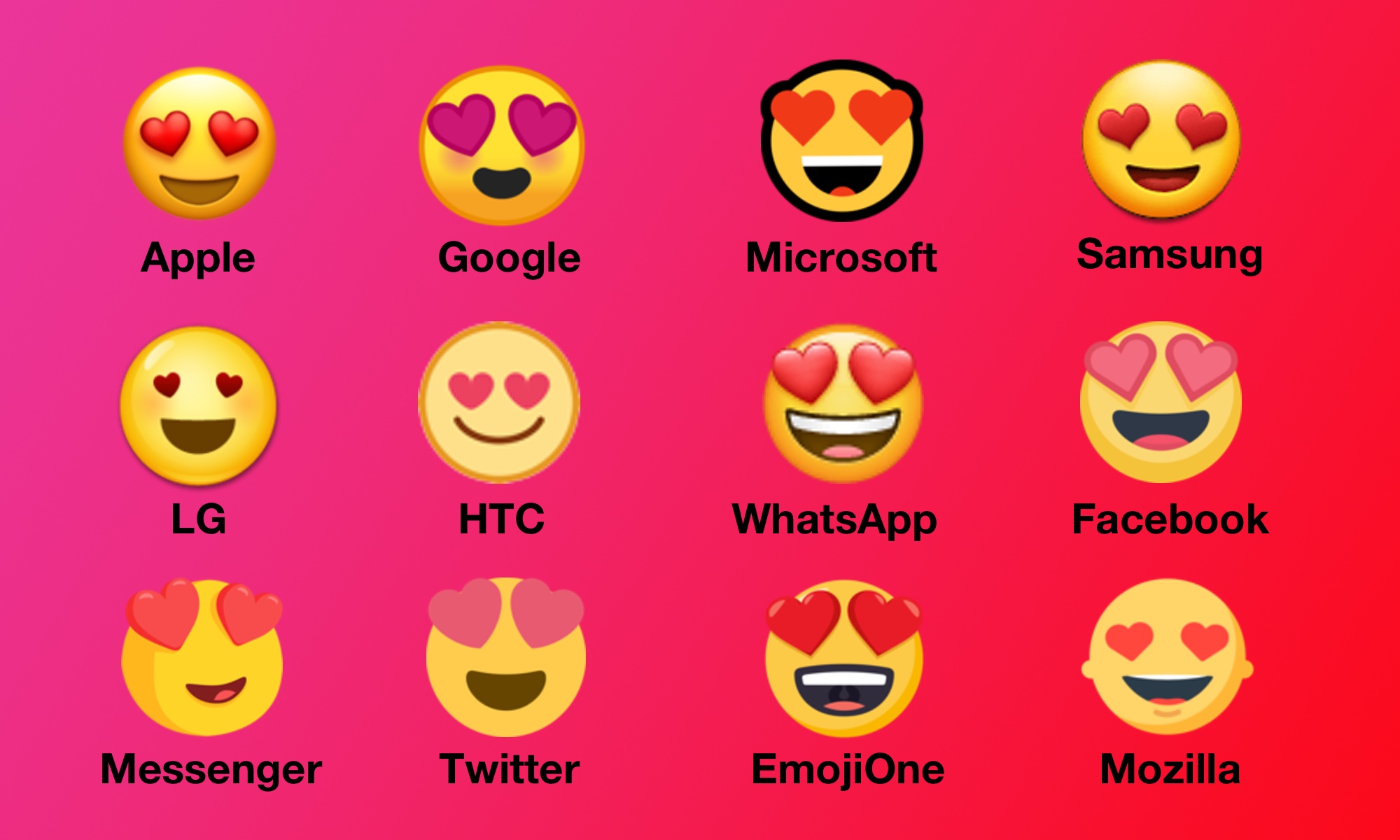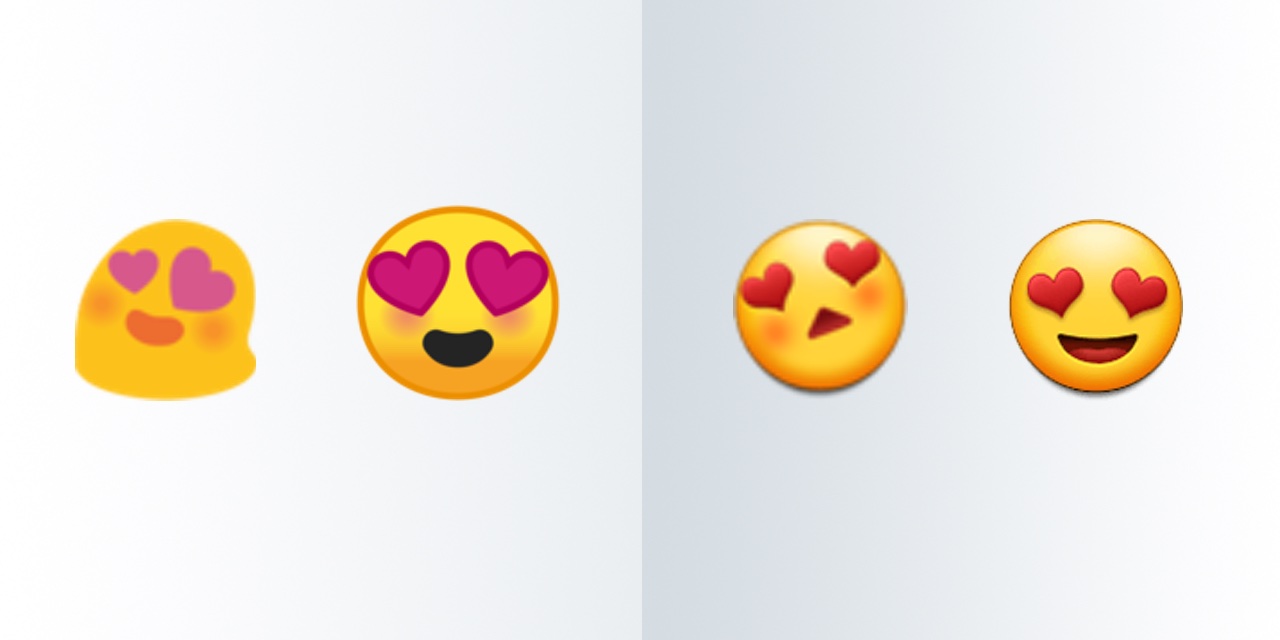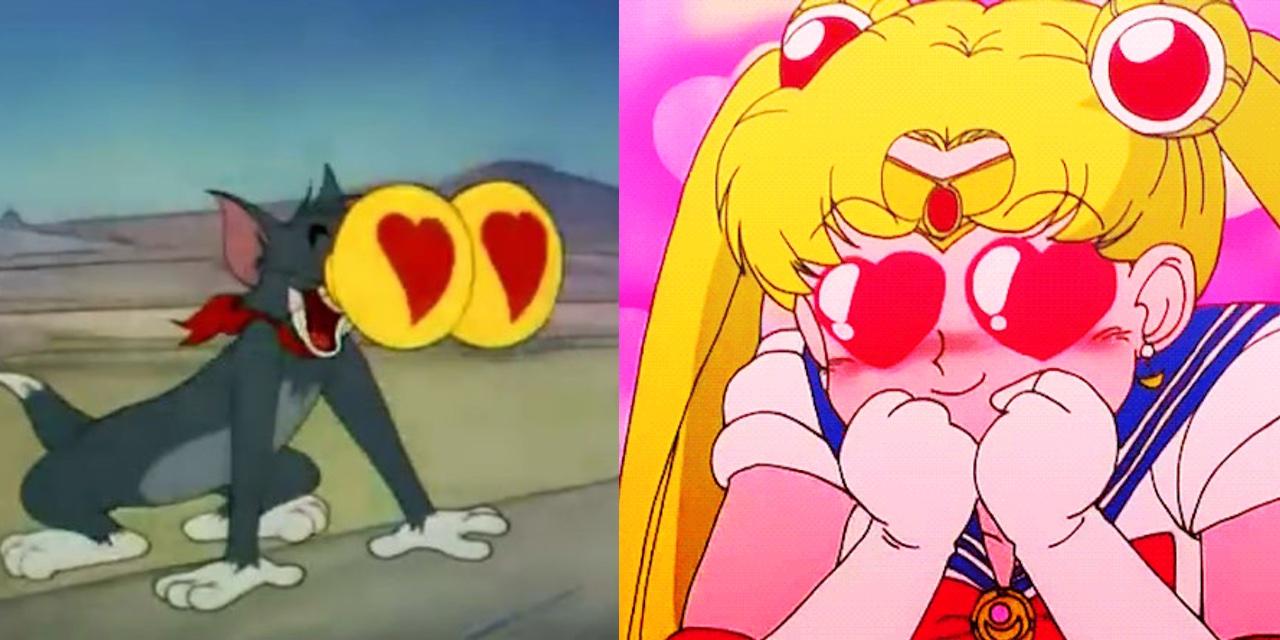What Does The 😍 Smiling Face With Heart-Eyes Emoji Mean? [Emojiology]
![What Does The 😍 Smiling Face With Heart-Eyes Emoji Mean? [Emojiology]](/content/images/size/w2000/2018/04/Emoji-Header-Emoji-Header-Smiling-Face-With-Heart-Shaped-Eyes-Emojipedia-2.jpg)
By many measures, 😂 Face With Tears of Joy has led the pack as the most used emoji in recent years. Dogging its heels, though, is another smiley: 😍 Smiling Face with Heart-Eyes. In 2017, this emoji ranked 4th on Apple platforms and 2nd on Facebook.
😍 Smiling Face with Heart-Eyes has a winning smile, to be sure, but its popularity may be due to the cross-cultural familiarity of those throbbing peepers. Where do they come from?
🔤 Meaning
Colloquially referred to as Heart-Eyes and officially called Smiling Face with Heart-Shaped Eyes within the Unicode Standard, 😍 Smiling Face with Heart-Eyes enthusiastically conveys love and infatuation, as if to say “I love/am in love with” or “I’m crazy about/obsessed with” someone or something.
The objects of its passion are many and various, ranging from people to possessions, and its tone can be romantic or platonic depending on context.
😍 Smiling Face with Heart-Eyes has a seldom used feline peer, 😻 Smiling Cat Face with Heart-Eyes.
💬 Development
We’ve been taken with 😍 Smiling Face with Heart-Eyes since 2010, when Unicode 6.0 approved it for use on a variety of modern platforms.
Apple incorporated it as part of its early, limited-release emoji implementation for Japan in 2008, and the original incarnation from Japanese carriers dates back to as early as 1999.
On the Apple keyboard, 😍 Smiling Face with Heart-Eyes sits—with apparent satisfaction—between 😎 Smiling Face With Sunglasses and 😘 Face Blowing a Kiss, itself a Top Ten emoji. But a great many of us don’t need to scroll to locate 😍 Smiling Face with Heart-Eyes, as it finds a ready home under our “Recently Used” tabs.

Above: The Heart-Eyes Emoji is very consistent across platforms, mainly varying by teeth and tongue. Only HTC's has a closed mouth.
Across platforms, 😍 Smiling Face with Heart-Eyes has a fairly uniform appearance. Except for HTC, the emoji boasts a full, slack-jawed smile, sometimes flashing teeth and tongue, as we see on Microsoft. And most distinctively, of course, two red or pink hearts burst with love as the emoji’s eyes.
The consistency of 😍 Smiling Face with Heart-Eyes joins a growing convergence of emoji design, particularly noticeable after Google retired its “blobs” and Samsung started hewing to the look of other vendors.

Above (left to right): The Heart-Eyes emoji on Google Android 4.4, Google Android 8.0, Samsung TouchWiz 7.0, and Samsung Experience 9.0.
History, though, is instructive here.
Before Samsung Experience 9.0 and under Google Android 4.4 and 5.0, the two tech giants featured 😍 Smiling Face with Heart-Eyes emojis that keeled back, as if literally love-struck. Their design is more dynamic, even more cartoonish—and for good reason. Artists have long inked heart-shaped eyes as a visual shorthand for love in both Western and Japanese comics and animation.
In Western cartoons, we can find classic characters like Donald Duck, Tom Cat, Penelope Pussycat, and Snoopy swooning with hearts for eyes when smitten by a sweetheart. The convention apparently draws on the use of floating, free-form hearts to convey love as well as eyes popping out of a character’s head to portray extreme emotion. More contemporary Western cartoon characters, from the Animaniacs’ Dot to SpongeBob SquarePants, continue the heart-eyes trope while also nodding to its history in cartoons.

Above: The Heart-Eyes emoji takes its inspiration from cartoons, as seen in Tom Cat from "The Tom & Jerry Show" (left) and beloved anime character Sailor Moon (right).
The Japanese counterparts, manga and anime, use a special system of symbols to depict various emotional and physical states. One is the snot bubble, which supplies the tear-drop shape in the oft-misleading 😪 Sleepy Face, whose emojiology we previously explored. Another includes heart-eyes, representing infatuation or adoration. The eyes of character Sailor Moon, of the series of the same name, notably pulse with plump, pink hearts when she’s enamored. The style of her hearts also evoke kawaii, the Japanese pop-culture phenomenon of “cuteness” that gave us Hello Kitty.
Some new members of the emoji family, 2015's 🤑 Money-Mouth Face and 2017's 🤩 Star-Struck , also call on stylized eyes used in Western and Japanese cartoon traditions.
The particular oversized, "gaga" hearts on 😍 Smiling Face with Heart-Eyes bears close resemblance to heart-eyes in manga and anime, as does the exaggerated, gasping mouth. This suggests emoji designers may have been influenced by a more Japanese aesthetic. Unlike with 😪 Sleepy Face, however, Westerners, already familiar with them from their Saturday morning Cartoons or Sunday funnies, needed no education on what heart-eyes signify.
When it comes to using 😍 Smiling Face with Heart-Eyes, we might say it was indeed love at first sight—for East and West alike.
✅ Examples
While 😍 Smiling Face with Heart-Eyes may originate in depictions of romantic love, it has proven itself a versatile and go-to emoji, employed as a fun and energetic way to fawn over some object of affection, including:
Adorable animals
Guys I just met a 12 week old Italian mastiff named Roxy. 😍😍 pic.twitter.com/nprZMN6LKo
— Molly Knight (@molly_knight) April 17, 2018
Beautiful landscapes
Quick video as we stopped for a run for Our Miss Brooks at the Dallas City Park before going on errands. #ilovethisplace 😍🌲😍 pic.twitter.com/PAIhKFmdpU
— teri borchers (@teriborchers) April 17, 2018
Attractive people
Hello littles rainbows 🌈🌈🌈
— kira 雪 (@kiramyrah) April 17, 2018
Yall are so cute 😍#LGBTCuties pic.twitter.com/GGNEo3FhY9
Celebrity crushes
yes Justin 😍 pic.twitter.com/f6T3knYdKd
— . (@biebsftlife) April 17, 2018
Beloved siblings
My little brother isn’t so little anymore 😍😂 pic.twitter.com/qL2t4y0cUf
— Giovana Carrillo (@gioooovana__) April 10, 2018
Significant others
My wife just gets prettier and prettier😍 pic.twitter.com/HT5HLxNMI6
— Thomas Rhett (@ThomasRhett) April 16, 2018
Nom nom nom
Good morning 😍. Waking up to Avocados 😘 pic.twitter.com/83hs5qc9RC
— Janet Machuka🇰🇪 (@janetmachuka_) April 17, 2018
A few of our favorite things
Teeny tiny baby shoes = all the 😍 https://t.co/PRTt10YBC6 pic.twitter.com/tVrMWsGPcV
— shopDisney (@shopDisney) April 17, 2018
As @shopDisney’s tweet shows, we are increasingly using 😍 Smiling Face with Heart-Eyes not only to mark tone, but also in playful substitution of love words themselves, e.g., “I 😍/am in 😍 this!” or "He/she/they are my 😍!"
And as the Disney tweet also suggests, businesses are taking advantage of the popularity of 😍 Smiling Face with Heart-Eyes on social media. One social media practice swaps 😍 Smiling Face with Heart-Eyes for the likes of “Extremely Satisfied” on common rating scales:
On a scale of 1 to 😍😍, how much do you love this kitchen?? @ Lola Interiors https://t.co/nU3xG0aPJj
— Lola Interiors (@lolainteriors) October 28, 2016
🗒️ Usage Notes
😍 Smiling Face with Heart-Eyes might owe much of its success to its mix of two qualities in great demand in our digital age: It’s both personal and exclamatory.
😍 Smiling Face with Heart-Eyes is a like button with an exclamation point.
Because it’s a smiley, 😍 Smiling Face with Heart-Eyes has subjectivity—it has an “I,” it signals there is a person behind the screen. Its bouncy and bubbly hearts, meanwhile, are dramatic, emphatic, and obvious, leaving no room for the ambiguity that ruins many a text or tweet.
That blend sets 😍 Smiling Face with Heart-Eyes apart, if subtly, from its close companion, ❤️ Red Heart, though they are commonly paired or sometimes interchanged. In private messages, ❤️ Red Heart can often convey much more intimate sentiments of love than 😍 Smiling Face with Heart-Eyes intends while in public ones, ❤️ Red Heart can lack the excitement of 😍 Smiling Face with Heart-Eyes.
Maybe it’s that balance, personal but not too personal, that makes us all so 😍 😍 😍 about 😍 Smiling Face with Heart-Eyes.
